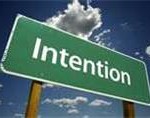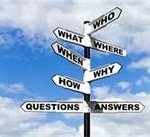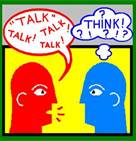Emotions, Intentions, and Implications of Knowing I Dream in the Moment
Emotions, Intentions, and Implications of
Knowing I Dream in the Moment
Workshop for the 2012
International Association for the Study of Dreams PsiberDreaming Conference
© Beverly (Kedzierski Heart) D’Urso, Ph.D
I have learned through my involvement in Lucid Dreaming/Lucid Living [1], as well as through my spiritual school and seminary [2], that becoming lucid, or knowing I dream while I dream, allows me to expand into the dreamer of the dream in the same way that self-realization allows masters to expand into Beingness. In other words, expanding into the dreamer in the sleeping dream state serves as a microcosm of expanding into Beingness in the waking state.
When I get lucid, I can draw from the powers, also called aspects of essence, of my expanded self that exist beyond my sleeping-dream-self or even my waking-personality-self. These powers allow me to, for example, experience unusual magic in my sleeping state or amazing strength in my waking state.
I view the implications of lucidity, a way of understanding self-realization, as more valuable than the adventures I had when I first began having lucid dreams, or at least more important to this period of my life. The implications of lucidity, such as knowing that I exist as more than just my body, help me better understand how I define myself, my potential, and my world.
To understand what I mean by implications, it helps to have had a lucid dream. In order to become lucid, I regularly question whether I might be dreaming in the present moment. I do this in my sleeping state or my waking state because I view any state as a dream if I experience a body and/or an environment [3]. I also sense, look, and listen for clues, such as unusual situations in my environment and my body.
Two of my favorite ways to become lucid involve: (1) fully experiencing my strong, difficult emotions, such as the fear of facing the scary witches of my recurring childhood nightmare [4], and (2) clearly knowing my heart-felt intentions, such as my deep desire to get married, raise a child, and experience connection. Note that my heart-felt intentions seem to get realized not by control, but merely by my expansion into Beingness, or what I call the Dreamer of life, when I do not resist the process.
In this workshop, you will come up with ways that you block your emotions and intentions, as well as discover your own implications of knowing that you dream in the moment. I have created an exercise that requires spontaneous answers to specific questions. I modeled this exercise after the exercises of the Diamond Approach spiritual path [5]. In the Appendix, I’ll give some sample answers to the exercise questions. You may want to try the exercise both before and after you read the sample answers.
The exercise works best when done with a partner. You can pick someone from this conference as a partner and set up a Skype session or phone call. This will help both of you get to know each other better, as well. Alternatively, you can choose a friend or family member as a partner. You might both benefit from recording the exercise.
If you do not want to work with a partner, you will have to both ask and answer the questions yourself. You can speak them into an audio recorder, write them down on paper, or type them up.
The exercise attempts to access your subconscious ideas and beliefs, so try to respond as spontaneously as possible. Do not spend time ‘thinking.’ Just say whatever comes to mind. With a partner, the exercises should take about half an hour, or if you work alone, about fifteen minutes.
I will present a series of three questions. Each partner will take a total of five minutes to answer the question over and over again during his or her turn. This amounts to ten minutes per question or thirty minutes for the entire exercise. A timer helps, or at least a clock.
The exercise works like this:
Partner A asks partner B the question, exactly as it appears, for B’s turn at answering. B responds with a quick answer of a few words or a few sentences for approximately ten or twenty seconds.
After B answers, A says “Thank you,” and asks the same question again. B responds with a new answer to the same question, and A says “Thank you” again.
If B says nothing after about twenty seconds, A merely says “Thank you,” and then asks the same question again. Use common sense for the timing, and let the exercise flow in a natural manner. A must not say anything but the question, exactly as it appears, and “Thank you” during B’s turn.
This process of A always asking the same question over and over again, and B always answering, goes on for five minutes.
Then, the partners switch, where B asks and A answers, in the same manner as above, again for five minutes.
After both partners work with the first question, they move on to the second question for five minutes each. Finally, they both work with the third question.
Questions:
While in the waking state or the sleeping dream state:
1.) Tell me a way you avoid experiencing your feelings.
2.) Tell me how you get in the way of fulfilling your intentions.
3.) What does it say about you and reality when you know you are dreaming?
In conclusion, you can become lucid by fully experiencing your difficult emotions, especially the strong ones that occur often. Remaining conscious of your heart-felt intentions in the moment can help them come true through the power of your expanded self. Finally, the implications of knowing you dream in the moment, or becoming lucid, can assist you in better understanding how you define yourself, your potential, and your world.
After you complete the exercise and reflect upon your results, post your comments and answers to share with others if you wish.
Appendix:
Sample answers:
While in the waking state or the sleeping dream state:Question 1: Tell me a way you avoid experiencing your feelings.
I don’t stay in the present moment.
I justify them.
I discharge them, for example by yelling.
I see myself as too mature to have them.
I numb myself with too much food, etc.
I wake myself up.
Question 2: Tell me how you get in the way of fulfilling your intentions.
I don’t believe I can fulfill them.
I think I must do so in a certain way.
I focus on something going wrong.
I get caught up in activities.
I don’t make my intentions clear.
I think that I don’t have enough time.
Question 3: What does it say about you and reality when you know you are dreaming?
I can take risks.
I don’t need to struggle nor worry.
I view all that I experience as part of my expanded self.
I see unlimited possibilities.
I know that I exist as more than just the body that I currently experience.
I recognize a different reality in which I sleep.
References
[1] Lucid Dreaming-Lucid Living: Papers and Work of Beverly D’Urso.
[2] The Ridhwan Foundation. The nonprofit spiritual organization established to support and preserve the integrity of the Diamond Approach teaching.
[3] Could You Be Dreaming Now? D’Urso. D’Urso, Beverly (Kedzierski Heart).
Workshop Presented at the IASD PsiberDreaming Conference, September 2011.
[4] Lucidity and Self-Realization through Emotional Surrender. D’Urso, Beverly (Kedzierski Heart). Paper Presented at the IASD 29th Annual Dream Conference, Berkeley, CA., June 2012.
[5] The Unfolding Now: Realizing Your True Nature through the Practice of Presence. Almaas, A.H., Shambhala, June 2008.
http://ahalmaas.com/Books/unfolding_now.html





